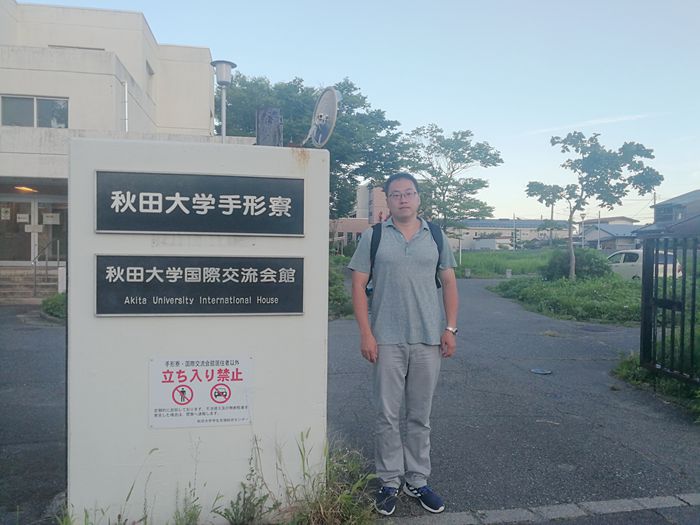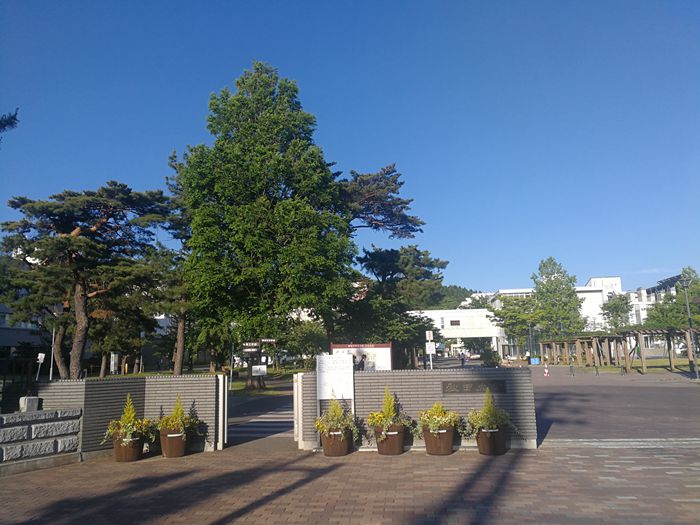Study at Akita University Hospital
date:2020/1/14 15:58:20 hot:1915
I appreciate that I can own this chance to share my study in Akita University Hospital this summer with you guys. With the help of the hospital and the department that I am honored to study in the hospital of Akita university in Japan from June to August this year. Although the time I spent there is short, I have learned so much things from this wonderful trip that I cannot wait to share them with you.

Akita university is a national university located in Akita city, northwest of Japan. It has been merged with Akita Normal School, Akita Youth Normal School and Akita Mine School since 1949. The medical department was established in 1970. The hospital of Akita University is one of the biggest hospitals in Japan with more than 1,000 beds. When I first arrived there, I saw the clinic with bright and clean lobby full of patients but very quiet, neither the patients nor the medical staff talking loudly. Wheelchairs, trolleys and baby carriages were neatly arranged in the doorway, which were provided for free to the people who needed them.

The Japanese is very serious about the details in many ways, which impresses me most. For instance, many otolaryngology operations are contaminated and aseptic requirements are not as strict as those of neurosurgery; even if there is wound dressing every day, each patient must disinfect the seat prior to operation. After each operation, they weigh each piece of gauze to accurately calculate the amount of blood loss. The hospital provides each inpatient with a meal designed by a dietitian according to the nutritional needs of different diseases. Meals are delivered by sealed special dining car, and each patient is equipped with a special dining plate with computer bar code label consistent with the access code.

The hospitals respect patients’ rights and protects their privacy. Only the name of the patient can be seen on the patient list at the doctor’s office or the bedside card in the ward. What a patient suffering from and even the severity of the illness are kept as patient privacy, and the hospital and medical staff have no right to disclose it.
Standardization of surgery is also the most basic requirement in Akita University Hospital. The rigorous working attitude of Japanese medical staff is the basis to ensure that standardized surgery can be carried out consistently. Every operation, whether it is performed by a young doctor or a famous professor, should be done strictly according to the instructions, such as the scope of lymph node dissection, the safe margin of tumor resection, the degree to which the blood vessels become naked, and the structures to be dissected. In all cases of tumor, a quick pathologic examination of the incised edge must be done to make sure that no tumor remains. Larger tumor, even if it takes three or four hours to do the flap, will not be forced to simply suture. Every operation is videotaped, and patients can take it home and watch it themselves.

Akita University Hospital focuses on both clinical and basic medical research. There are two laboratories in otolaryngology, head and neck surgery department. The first two years of work is not in the clinical, but in the laboratory doing experiments. A lot of researches have been done on the basic researches of nasal and sinus mucosal immunity as well as head and neck tumors.
The Hospital of Akita University is also a teaching hospital like our hospital. Training excellent medical workers with humanistic spirit is one of the basic concepts in the Akita University hospital. After 6 years of undergraduate education, Japanese medical students can pass the national medical practice examination after graduation, and after 2 years of medical training, they can obtain the license of medical practitioner, which is widely recognized in the whole country. During the last two years at school, the students will participate in clinical practice and have half a year to choose specialized courses. With emphasis on the basic medical knowledge, the students here have a solid foundation of knowledge. Every Friday is the department’s case discussion time. Every head of the department will join the meeting and no one ask for leave. Each case was reported in the form of drawing. The doctor told me that they need about an hour or two to practice drawing when they were students.
Besides learning professional knowledge, I have also gained friendship. The doctors and professors in otolaryngology, head and neck surgery department are very enthusiastic. Though the trip has finished soon, the wonderful experience in this summer will remain in my mind forever. It is not just a simple trip but also a guiding light for my career.

By Gui Yan/ Lin Juanzhen
Edited by Office of International Cooperation and Communication

